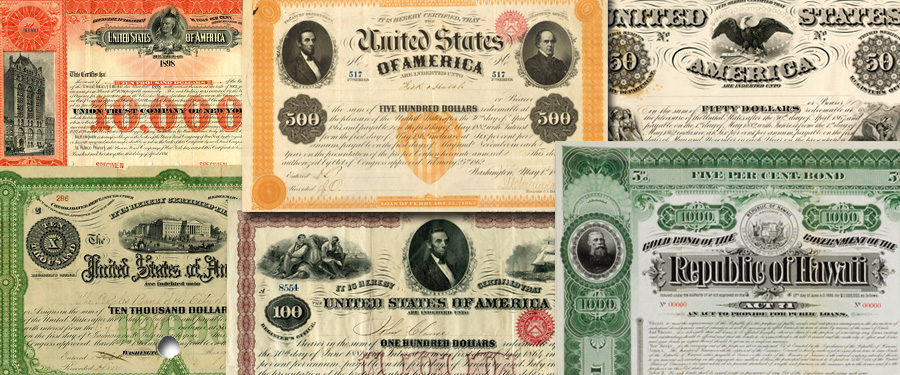
When
our Stack’s Bowers Galleries’ clients, scholars, John’s friends and family and
others glance at or study closely the pages of this catalog section, they are
witnessing the ongoing passion of a transformative collector in this or any
other era. Though we convene this event at the ANA World’s Fair of Money, the
following 101 items, many offered for the first time or in multiple decades,
represent just a part of John’s amazing collection of financial history and
numismatic items and the spirit with which he acquired them.
When I
first met John and Diana Herzog in 1985, financial history was a subject that
seemed contradictory to my numismatic pursuit of United States Obsolete
banknotes. It has taken these 33 years for me to realize the transformative
role John has played in my passion for collecting, cataloging, and enjoyment of
all financial instruments and the significance of their use in commerce and
culture.
John’s
decades-long passion for collecting and understanding these historic treasures
inspired his vision and eventually fulfilled the dream of a permanent Museum of
American Finance (a Smithsonian affiliate), located within the steel canyons of
Wall Street and the birthplace of the American capital markets. The museum
evolved from wall exhibits, to a small museum and gift shop in the ground floor
hallway at 26 Broadway (Rockefeller’s Standard Oil Building), to its stately
open air gallery at 48 Wall Street. Visitors have the opportunity to enjoy the
experience that John wishes to share about the significance of financial
history and its relevant artifacts.
The
bond certificates, United States Interest Bearing notes (sold within the main
body of this session and pedigreed to the Herzog Collection), documents, and
related items cataloged in this auction mirror the times they were issued. This
sale covers items issued from 1837-1919. Most were for the financing of war and
conflict. Even in the late 1840s, the United States was young and vulnerable.
The idea of Manifest Destiny to populate the continent merged into the Civil
War and the creation of fiat currency and many different loan issues. The
National Banking system and its currency notes were backed by bond purchases.
Essential funding toward the end of the Civil War saw rising interest rates and
favorable terms for investors to sell notes and redeem them for gold. After the
Civil War, relative calm and peace brought about ambitions for American
expansion overseas, where vulnerable European nations with dwindling empires
could be replaced by American mercantilism. Hawaii became our 50th state
because we believed that was a better idea for everybody in 1893. The Spanish
colonial empire was collapsing in the 1890s and the sinking of the U.S.S. Maine
made Teddy Roosevelt famous and created low denomination Treasury Bonds aimed
for public sale to support war efforts. The most significant public financing
by the United States was for World War I, where five issues of loans were
created to sell to the public and investors in a three-year span to fund this
war. John’s collection of these bond certificates is the finest and most
comprehensive ever cataloged for sale.
It was
exciting to be called upon to catalog this special presentation of the John E. Herzog
Collection for Stack’s Bowers Galleries. It allowed me over the course of
research and writing to reflect how transformative a person John has been to
me. I realized how much
of a
story the items themselves have to tell. When John and Diana hired me, in early
1989, to work at R.M. Smythe & Co., I never imagined that someday I would
have the honor of presenting these to the collecting community. Everyone should
be thankful for John’s generous spirit, his creation of the museum, the sharing
of his passion for numismatics and collecting, and the friendship he has shown
to so many of us for decades. He truly is “The Friend of Financial History.”
Bruce
Roland Hagen
July
17, 2018





